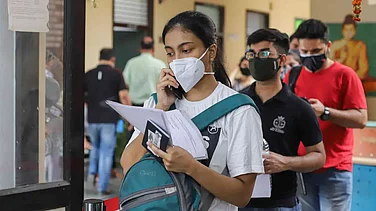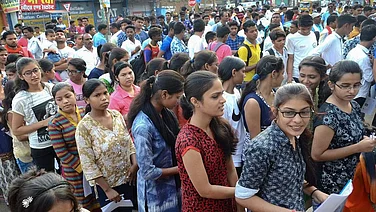The rising toll
India’s most prestigious universities are home to excellence, aspiration—and increasingly, emotional turmoil. Student suicides, once considered isolated tragedies, are becoming distressingly common. The causes are complex: a blend of intense academic competition, cultural dislocation, institutional inertia, and an enduring stigma around mental illness.
Admissions to elite institutions like IITs, AIIMS, and top private universities remain fiercely competitive. Many students spend their adolescence in coaching classes, trained to crack entrance exams but ill-prepared for failure—or even for the mental demands of success. Once inside, the pressure persists. Curricula are rigorous, grading is unforgiving, and academic support often limited. For first-generation learners or those from rural areas, the adjustment can be especially difficult. Navigating English-medium education, unfamiliar social norms, and high expectations, they may feel isolated despite being surrounded by peers.
Degrees are not just qualifications. They are symbols of family sacrifice, social mobility, and national prestige. When students falter, they carry not just personal disappointment but a deep sense of letting others down.
Missing safeguards
Mental health infrastructure on campuses remains inadequate. A 2019 study in the Indian Journal of Psychiatry found that fewer than 20% of Indian universities have full-time professional mental health staff. Nationally, India has only 0.75 psychiatrists per 100,000 people—far below the WHO’s recommended 3 per 100,000.
We must build campuses that foster not just intellectual growth but emotional resilience and belonging
For students in crisis, this means long wait times, limited access, and scarce continuity of care. Often, institutions respond to distress only after a crisis has escalated. Preventive mechanisms—like routine screenings, early intervention, or trauma-informed academic advising—are largely absent.
In many cases, complaints of psychological distress or interpersonal conflict go under-reported or unresolved. Students are hesitant to speak up. The stigma remains entrenched: asking for help is wrongly seen as weakness, especially for young men, who are less likely to seek support even when overwhelmed.
Spotting the cracks
Not all distress looks the same. Some students withdraw visibly—from classes, friends, and routines. Others perform well academically while suffering in silence. Warning signs often go unnoticed. Changes in communication patterns, sudden mood shifts, or persistent fatigue may be dismissed as temporary. Families, too, may struggle to interpret signals during brief phone calls or messages.
Institutions must be equipped not only to respond but to recognise. Faculty training in psychological first aid, peer support networks, and integrated wellness programs can help catch early signs. Yet, such initiatives remain the exception, not the rule.
A shared responsibility
The conversation around mental health must expand beyond campuses. Employers who recruit from universities can support awareness programs. Policymakers can fund mental health research and education campaigns. Families can engage in open dialogue and reduce the burden of unrealistic expectations.
A nation that prizes academic excellence must also value emotional survival
The economic case is strong. The WHO estimates India will lose over $1 trillion in productivity due to mental illness between 2012 and 2030. But the moral case is stronger: every student deserves to be treated as more than a rank or a resume.
A humane education
India has made strides in expanding access to higher education. The next step is ensuring that access does not come at the cost of emotional survival. The brightest minds of our generation deserve not only opportunity, but empathy. They deserve institutions that listen, policies that protect, and a society that understands.
No academic goal is worth a young life. The time to act is now—not after another silence.
(The author is a senior IPS officer from Haryana, renowned for his crime control and community engagement initiatives, with a strong focus on youth well-being and resilience.)
Improving campus mental health demands both structural reform and cultural change. The following steps are essential:
Embed mental health services into campus life. Trained counselors should be available, accessible, and integrated into orientation and academic support frameworks.
Mandatory sensitisation for faculty and staff. Professors are not therapists, but they are often first responders. They must be trained to identify distress and guide students toward help.
Independent grievance systems. Transparent mechanisms for addressing harassment or academic grievances can reduce feelings of helplessness.
Academic flexibility. Extensions, reduced course loads, and options for remedial learning must be normalised during periods of distress.
Data-backed monitoring. Anonymous mental health surveys, institutional audits, and regular reporting of student well-being indicators can inform policy.
Policy mandates. The UGC and Ministry of Education can lead by requiring colleges to report on mental health infrastructure and adopt minimum standards for care and intervention.





























